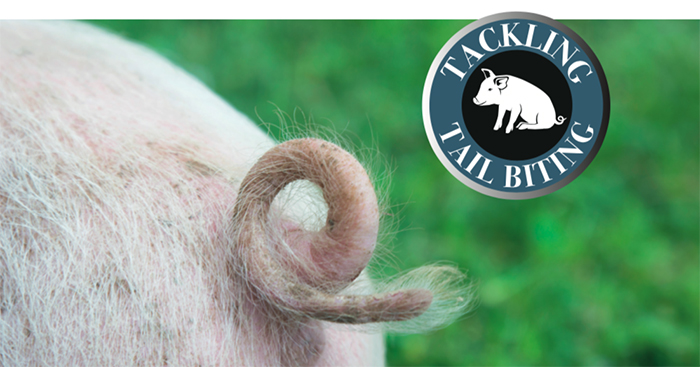In the latest in our Tackling Tail Biting series, Alistair Driver provides an update on what producers need to know about APHA’s plans for a tougher inspection regime
Pig producers are facing a tougher inspection regime from this spring, as the Animal and Plant Health Agency (APHA) looks to address the issue of tail docking.
But as we have been reporting during our Tackling Tail Biting series, there is concern over the lack of clarity so far on exactly what APHA will be looking for and what producers will be expected to do.
With this in mind, a delegation led by the NPA persuaded Defra and APHA to hold off from implementing the new regime in January while more clarity was sought. The changes are now due to come into force in April, but the NPA has stressed that this is still too early, given lack of clarity, and is pushing for implementation to be delayed further.
The stakes are high, as failure to comply with the inspections could result in enforcement action and hefty Single Payment deductions.
The NPA recently met APHA again to discuss the issue in more detail.
JUSTIFICATION FOR DOCKING
APHA has made it clear that farmers should only be docking tails if they are able to prove that they have looked at all likely trigger factors and reduced the risk for tail biting where possible – but are still experiencing issues.
“Justification for tail docking would need to be supported by evidence showing ‘reasonable’ effort had been taken,” NPA chief executive Zoe Davies said.
APHA will no longer accept a letter from the vet justifying docking – producers will need to provide evidence, such as the newly- developed AHDB pre-risk assessment and data collection form.
Dr Davies said the agency has accepted that its inspectors should not be telling people to stop tail docking as farmers will often not be in a position to do so straight away. “We have stressed that simply stopping tail docking can have serious unintended consequences,” she said.
But she said there was still no clarity on the percentage of tail-bitten pigs farmers would need to see before docking was justified.
ENVIRONMENTAL MONITORING
The agency’s new focus on environmental monitoring is giving cause for concern.
Inspectors will be looking at ammonia and CO2 levels, humidity and light, all variables that can affect pig behaviour and, potentially, tail biting. Responding to queries about the accuracy of its measurements, APHA insisted its monitors were calibrated to ensure they are reading accurately.
In terms of what producers need to do, APHA does not expect all farmers to measure ammonia levels.
“However, high ammonia levels should be detectable by nose, and in these cases, action should be taken to rectify the problem if the level is considered high enough to be affecting pigs’ welfare,” Dr Davies said, stressing that this is not a scientific approach. “There was discussion on the variability of ‘nose’ detection and also habituation that may mask producers’ ability to detect ammonia.”
CLARIFICATION ON ENRICHMENT
Producers must provide pigs with some form of enrichment – but there has been a lack of clarity over what is acceptable.
The NPA has fought hard to keep the requirement for all materials to be edible out of the new pig welfare code, instead insisting that it should be just one of a number of possible qualities.
Dr Davies pointed out to APHA that many producers were currently using a mix of wood and chains and/or plastic and asked if this would be acceptable. “APHA was clear that this combination would be OK as long as they are being used by the pigs. But producers must be prepared to make efforts to improve their enrichment if it is found to be wanting,” she said.
ASSESSMENT
Farmer attitudes towards inspection findings will have an impact on potential enforcement action.
“APHA will come down harder on farmers who fail to accept there is an issue where one has been raised,” Dr Davies said.
The NPA has requested that where there is not a clear breach, there should be a three-stage process, particularly as producers are getting used to the new regime. Under this system, inspectors could issue an advisory notice first and then a formal notice if there is no change. If the farmer still fails to comply, they could then declare a breach.
“It is very important that the inspection regime is fair and proportionate,” Dr Davies said.




